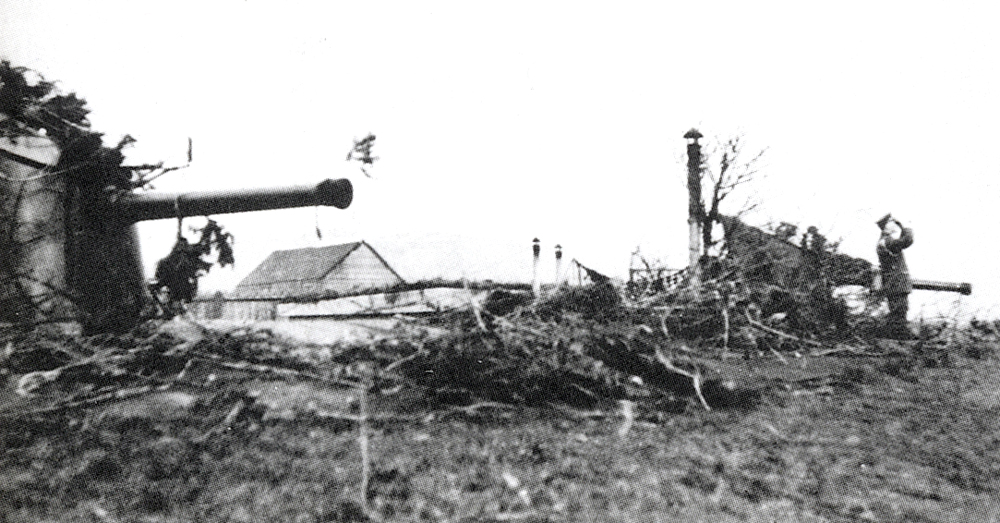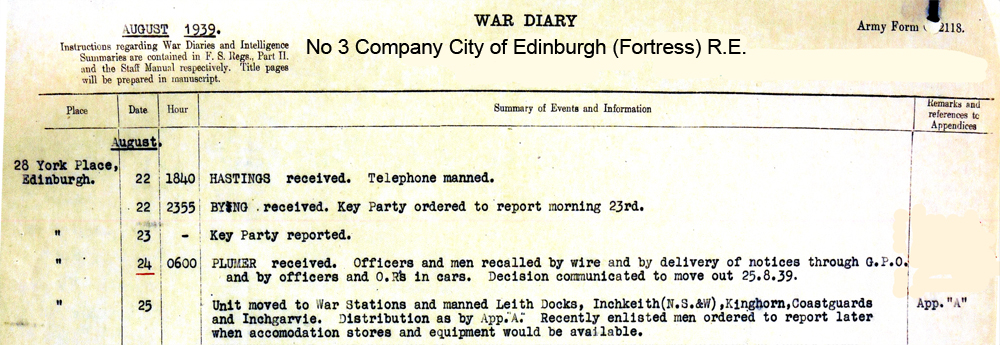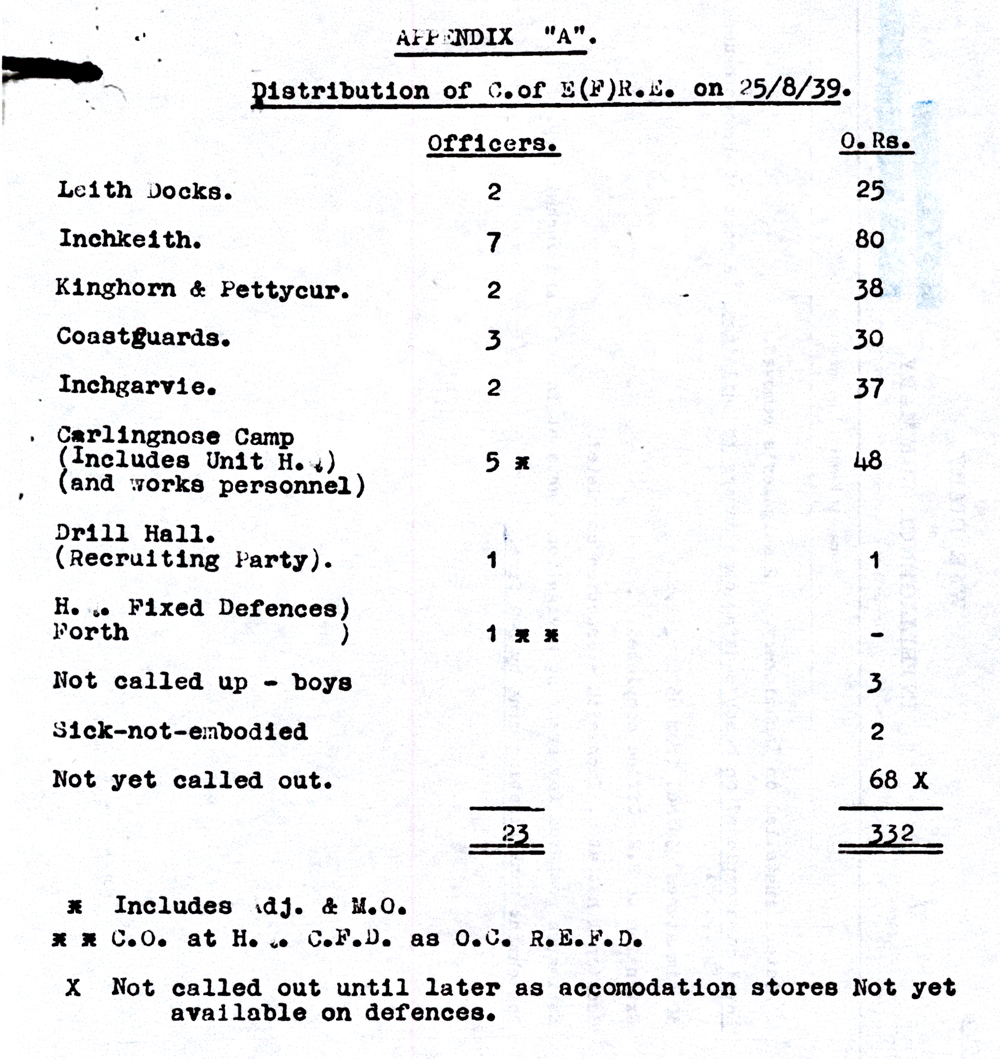Coastguard Battery – End of Service
| < Defence Lights | Δ Index |
In July 1920, authority was given for the work to be retained for drill and practice. It was listed in January and September 1921 as mounted in reserve, and ‘In action for drill’ respectively.
It was listed as part of the ‘approved armament’ in November 1927, but to be removed ‘ultimately’.
The battery was listed as being part of the Interim Defence Scheme of 1930, and made its last known formal appearance in a list of the approved armament in June 1934, when it was one of the four batteries remaining in the river (with Inchkeith, Kinghorn and Leith).
In May 1938, two 12-pdrs were still listed as part of the armament of the Forth, and it is certain that these were the two at Coastguard.
 The Coastguard Battery in the 1930s
The Coastguard Battery in the 1930s
from “Fortifications of the Firth of Forth” by Gordon Barclay and Ron Morris
It would appear that the battery was disarmed in the autumn of 1939, when the two guns were moved to Cramond.
In August 1939, John Guthrie had just turned 17 when he volunteered to join the Territorial Army. He was assigned to the City of Edinburgh (Fortress) Royal Engineers based at Carlingnose Barracks.
He kept many of his war-time papers, and copies of his regiment’s war diaries. Extracts from these papers are compiled as Carlingnose Barracks – a soldier’s story 1939 to 1946
John’s records show that Coastguard Battery was manned on 25th August 1939 by 3 Officers and 30 Other Ranks (O.R.)


Then on 28th October 1939, the men and the two 12-pounder guns were relocated to Cramond Island.

| < Defence Lights | Δ Index |